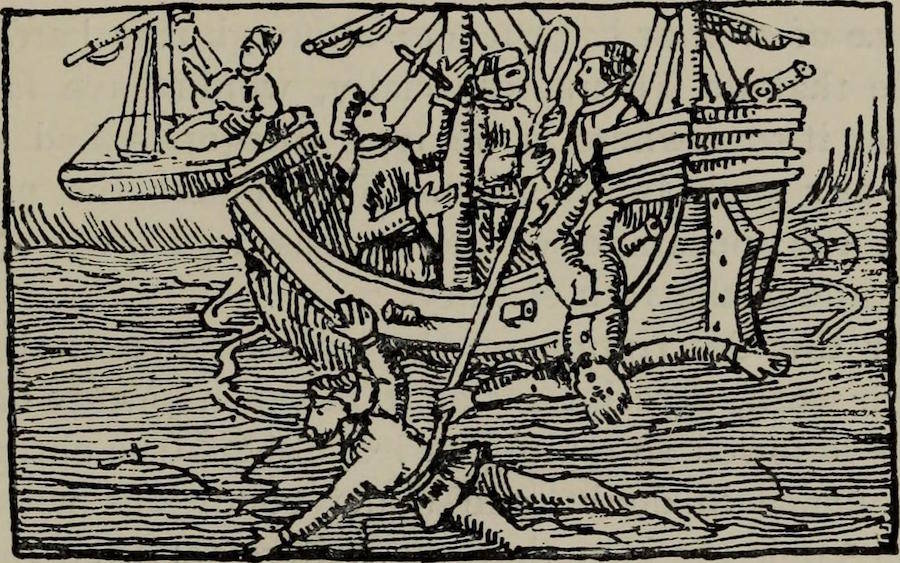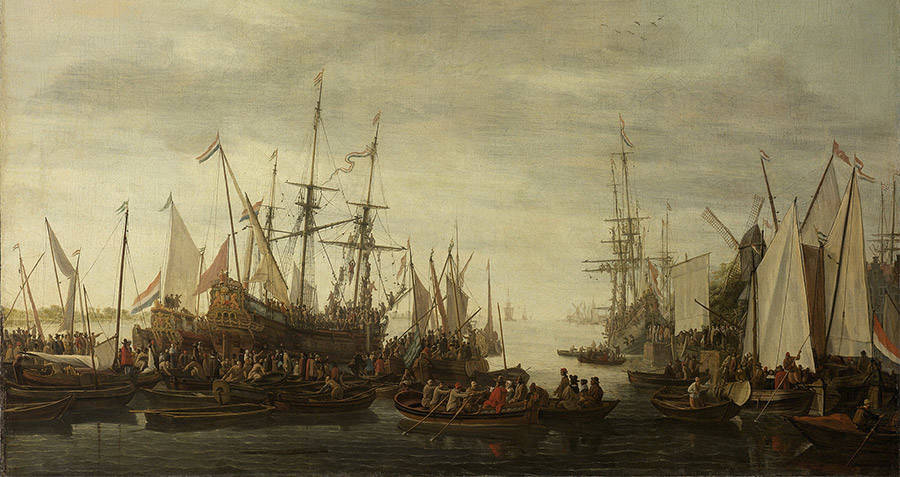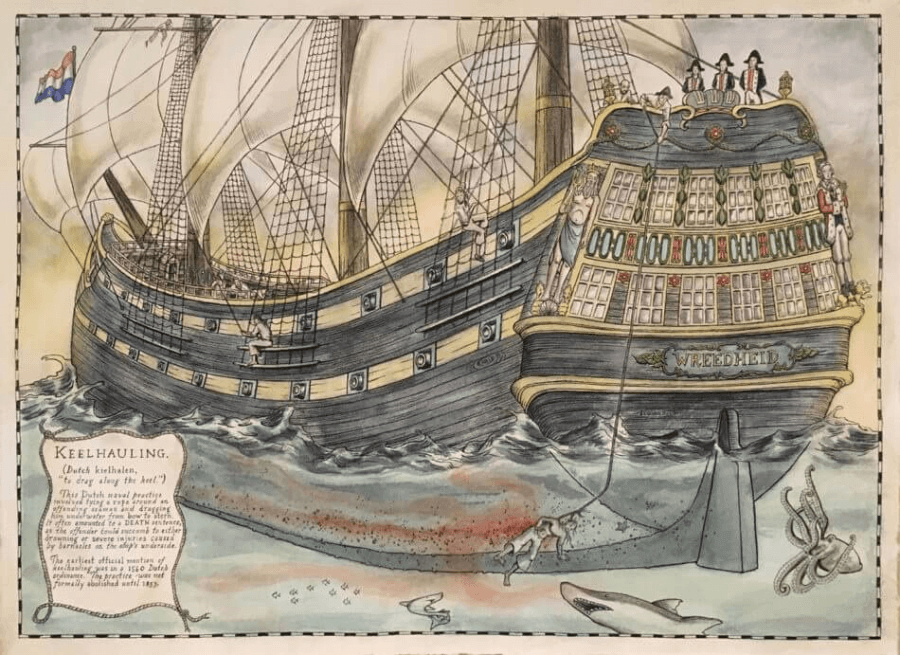An infamous punishment used to maintain order at sea in the 17th and 18th centuries, keelhauling was when sailors would be dragged under ships as punishment.
Ancient forms of torture are notorious for their cruelty and creative ways of inflicting excruciating pain. The practice of keelhauling is no exception.
Said to be used by the navy and pirates in the 17th and 18th centuries, keelhauling is a form of punishment in which the victim is suspended by a rope from the mast of the ship, with a weight attached to his legs.

FlickrAn engraved depiction of keelhauling from 1898.
Once the crew members let go of the rope, the victim falls to the sea and is dragged along the keel (or bottom) of the ship, hence the name keelhauling. Aside from the obvious discomfort, this part of the ship was encrusted with barnacles, causing lacerations to the victim being keelhauled.
Gruesome as it sounds, when it comes to the truth about keelhauling, there has been much speculation over how gruesome it was, how much it was used, and who exactly practiced it as a method of torture.
The Earliest Historical Records Of Keelhauling
Use of the term keelhauling is mentioned in 17th century accounts by English writers. But the references are sparse and vague. Finding a detailed account of the practice as used by the Royal Navy is rare.
The most concrete records that depict the official use of keelhauling as punishment seems to come from the Dutch. For example, a painting titled The Keelhauling of the Ship’s Surgeon of Admiral Jan van Nes by Lieve Pietersz sits in the Rijksmuseum Museum in Amsterdam and is dated from 1660-1686.

Wikimedia CommonsThe Keelhauling of the Ship’s Surgeon of Admiral Jan van Nes by Lieve Pietersz, painted around 1660 to 1686.
The painting’s description sheds some light on the practice, stating that the surgeon of Dutch Admiral van Nes was keelhauled. It describes the process as “a severe punishment whereby the condemned man was dragged beneath the ship’s keel on a rope. It served as a terrible warning to all mariners.”
Additionally, the author Christophorus Frikius’ book from 1680 titled Christophorus Frikius’s Voyages to and through the East Indies mentioned several instances on keelhauling in the 17th century.
The process is described by the British in the archived Universal Dictionary of the Marine from 1780 as “plunging the delinquent repeatedly under the ship’s bottom on one side, and hoisting him up on the other, after having passed under the keel.”
What Exactly Was Keelhauling And How Was It Performed?
However, that same British text also says, that the “culprit is allowed sufficient intervals to recover the sense of pain, of which indeed he is frequently deprived during the operation,” indicating that the ultimate goal of the punishment isn’t death.

An illustration of how keelhauling could have looked like in practice.
The British text also refers to keelhauling as a “punishment inflicted for various offenses in the Dutch Navy,” indicating that, at least by 1780, it wasn’t practiced by the Royal Navy.
It’s reported that any use of keelhauling by the British was discontinued around 1720, while the Dutch didn’t officially ban it as a method of torture until 1750.
There’s an account of two Egyptian sailors being keelhauled as late as 1882 in Parliamentary Papers from Great Britain’s House of Commons.
Getting to the bottom of which nations used keelhauling and how long they used it is difficult due to the lack of public records and descriptive accounts that exist.
But because there are mentions of it in various ancient texts and artwork, it’s clear that keelhauling isn’t a made up myth or old pirate legend.
If you found this story on keelhauling interesting, you may want to read about the eight most painful torture devices of the Middle Ages. Then you can check out some of the worst ways to die.





